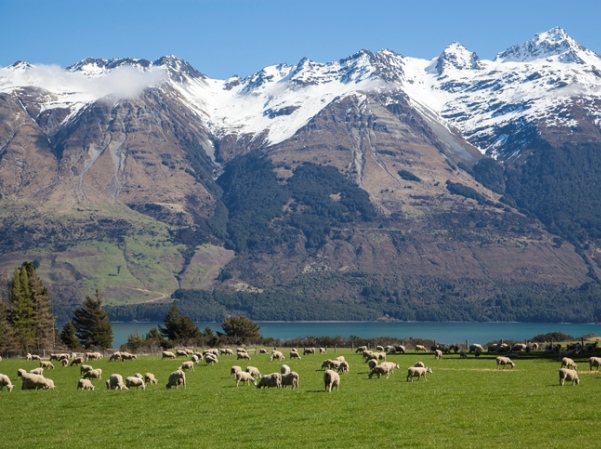New research shows some primary sector producers are generating much greater returns thanks to a commitment to sustainability.
The ‘green premium’ can be generated regardless of sector, types of ownership and age of company, say the researchers, and the key to success is in the collaboration of parties in the value chain.
The researchers found nine attributes common to these successful primary-sector value chains and the most important attribute is a commitment to shared values such as animal welfare, environmental management, social equity and whakapapa.
The research has revealed how New Zealand producers are creating higher returns from sustainably produced primary products. In some cases that premium is perceived to be 20-100% greater than non-sustainably produced equivalents.
The research from the Agribusiness and Economics Research Unit (AERU), funded by Our Land Water, sought to identify the common attributes of successful primary sector exporters. It covers multiple sectors including honey, wine, dairy, beef, fruit, and an emerging cosmetics brand, as well as Māori-owned and family-owned businesses.
The research, along with case studies and commentary and video is being promoted on a portal called The Value Project.

“The research reveals that, regardless of the sector or ownership structure, greater value can be generated when primary producers are part of a high-functioning value chain that’s committed to shared sustainable values,” says lead researcher Professor Paul Dalziel.
Examples of success
The research explored the value chains of companies as a diverse as Manawa Honey, Pegasus Wine, Reefton Distilling Co, Mea (a fragrance brand from Ngaī Tahu), Zespri, Kono Wines and Wakatu Incorporation, Taupo Beef & Lamb and the red meat sector.
A good example of the new value chain thinking at work is the Taste Pure Nature campaign by Beef+Lamb NZ. Using the insights produced by the AERU, B+LNZ established potential to achieve a 20% price premium in the US market, equating to extra revenue of $238 million in export returns.
It launched Taste Pure Nature as a vertically integrated value chain involving 8000 beef, sheep and deer farmers. Just two years into the campaign early signs show promising results. Awareness and preference are up. In California, preference for New Zealand grass-fed beef is up 5%, while preference for grass-fed lamb is up 4% since March 2020. Awareness of New Zealand beef and lamb is up 19% since March 2020.
Hugh Good, B+LNZ’s Global Market Intelligence and Research Manager says: “We could get so much more if we could prepare and process a greater portion of the frozen product we sell internationally and label it as grass-fed. That’s about innovating here, developing brands here, and moving up the value chain in terms of how we do things.”
Taonga values
Another example from the research is South Island pounamu, once perceived by tourists as generic greenstone but valued as taonga by Māori.
The owners of the pounamu intellectual property rights, Ngaī Tahu, recreated the value chain in which the stone is registered, carved by approved artists, recorded by weight and origin, and traceable through unique codes and photographs.
“When you buy your Ngaī Tahu pounamu, you can put in the individual number on the website and you’ll know where it was harvested, the story, the mythology behind it, and who carved it. It’s a whole journey of experience,” says Ngaī Tahu researcher Dr John Reid.
Dr Reid says the new value chain has created a premium ranging from 30%-100% over competitors.
The research shows similar premium is being captured by producers of honey, wine, seafood and more – by being part of a high functioning value chain.
Nine attributes of highly successful value chains
The research has identified nine attributes of these highly successful value chains.
“The most important, what we consider the core, is a commitment to shared values by every part of the chain, whether it’s the retailer, distributor, or suppliers. These values could be environmental factors such as carbon neutrality or social values such as origins or whakapapa – the point is that the values are understood and expressed all the way from the growers to the consumers,” says Professor Dalziel.
Another key attribute is market-orientation. The successful examples understand consumer preferences and align their products and offer to meet consumer demand.
Increasingly that demand is for sustainably sourced food and fibre.
“Our research into credence attributes – that is, what customers value beyond the obvious such as taste and appearance – shows that environmental considerations are much greater now than they have been.
“The values that customers expect are changing and a well-managed value chain will orientate itself to meet those expectations.”
See all nine attributes here: https://ourlandandwater.nz/news/the-9-habits-of-highly-successful-value-chains/
From volume to value
The research adds weight to the longstanding campaign by AERU director Professor Caroline Saunders, “that not an ounce of product leaves the country without a premium being attached to it.”
Prof Saunders says the value chain research is an important contribution to New Zealand’s ongoing journey from ‘volume to value’.
“New Zealand producers are at the forefront of sustainable practices but have not enjoyed the premium they deserve. This research shows how through greater collaboration and a commitment to sustainable values, as a nation we can enjoy greater financial rewards while also enhancing our natural environment,” she says.
The Value Project
‘Rewarding Sustainable Practices’ is the latest in a research series by AERU and funded by Our Land and Water.
The results of the research along with case studies, infographics and videos have been assembled into an online resource called The Value Project.
Visit The Value Project to read the full story.



